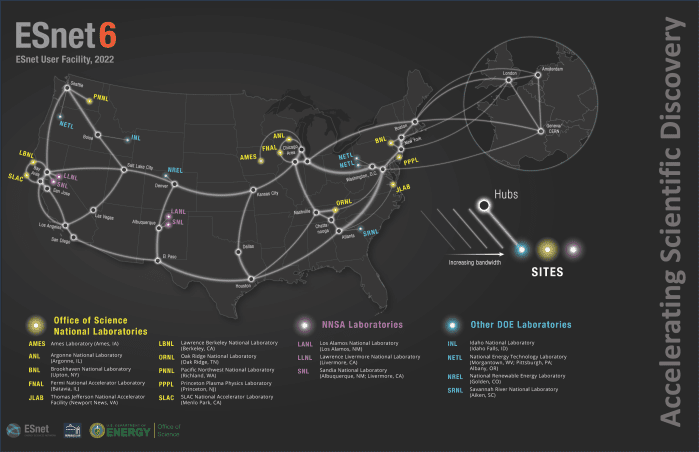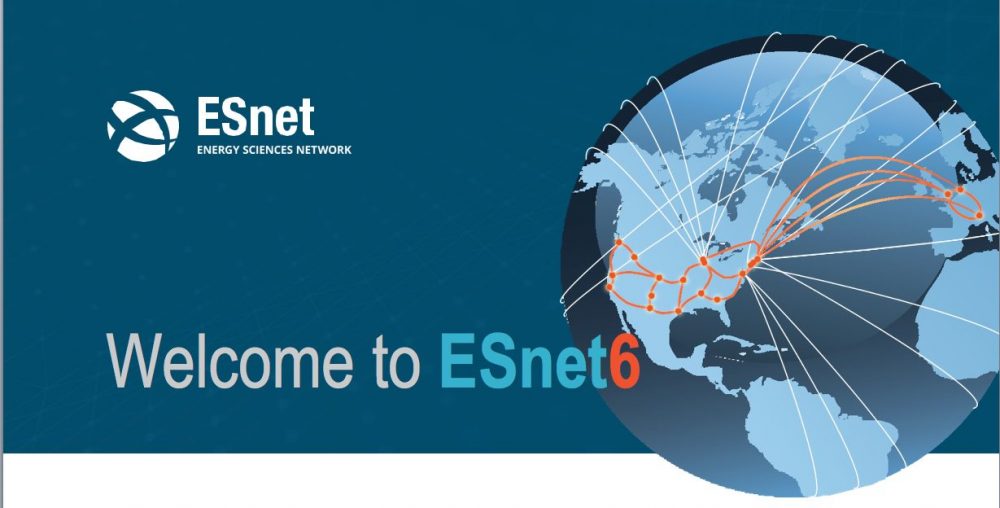Scientific research has become more data-intensive than ever, with researchers relying on large datasets, simulations, and collaborations across different institutions. To facilitate this, a high-speed network is essential for exchanging data between researchers and institutions. ESnet, the Energy Sciences Network, is a high-speed network that was created to meet the needs of the scientific community. In this article, we will explore what ESnet is, how it works, and why it is important.
What is ESnet?
ESnet is a network that provides high-speed data transfer capabilities for scientific research. It was created in 1986 by the US Department of Energy’s Office of Science to support the research needs of national laboratories, universities, and other research institutions. ESnet is now the fastest science network in the world, capable of transferring data at speeds of up to 400 gigabits per second.
How does ESnet work?

ESnet connects different research institutions using a dedicated fiber optic network that spans more than 13,000 miles across the United States. The network is designed to prioritize data transfer for scientific research over other types of network traffic. To accomplish this, ESnet uses advanced traffic engineering techniques to optimize the network’s performance for scientific data transfers.
ESnet also provides a range of services to support scientific research, including tools for monitoring network performance and troubleshooting issues. ESnet works closely with researchers to understand their needs and provide customized solutions to help them achieve their goals.
Why is ESnet important?

ESnet plays a critical role in enabling scientific research by providing high-speed data transfer capabilities that allow researchers to collaborate and share data across different institutions. Without a network like ESnet, scientific research would be much slower and more difficult to conduct. ESnet has been instrumental in facilitating many important scientific discoveries, such as the discovery of the Higgs boson particle and the detection of gravitational waves.
ESnet also supports the development of new technologies and applications by providing a platform for testing and experimentation. This has led to the creation of new tools and techniques that are now widely used in scientific research.
ESnet and the Future of Scientific Research
As scientific research continues to become more data-intensive, the need for high-speed networks like ESnet will only increase. ESnet is constantly evolving to meet the changing needs of the scientific community. For example, ESnet is currently developing a new network architecture that will enable even faster data transfers and better support for emerging technologies such as machine learning and artificial intelligence.
ESnet is also working to improve the security of scientific data transfers by implementing advanced encryption and authentication technologies. This is important because scientific data is often sensitive and confidential, and must be protected from unauthorized access.
Conclusion
ESnet is a critical infrastructure that supports scientific research by providing high-speed data transfer capabilities and a range of services to enable collaboration and innovation. Its advanced network engineering techniques and close collaboration with researchers have made it the fastest and most reliable science network in the world. As scientific research continues to evolve, ESnet will play an increasingly important role in enabling new discoveries and advancing our understanding of the world.
FAQs
What is the difference between ESnet and the internet?
ESnet is a dedicated network that is optimized for scientific research, while the internet is a public network that is used for a wide range of purposes. ESnet is designed to prioritize data transfer for scientific research over other types of network traffic, which allows it to provide faster and more reliable data transfer capabilities than the internet.
How fast is ESnet?
ESnet is currently capable of transferring data at speeds of up to 400 gigabits per second, making it the fastest science network in the world.
What kind of research is supported by ESnet?
ESnet supports a wide range of scientific research, including physics, astronomy, biology, climate science, and many others. Any research that involves large datasets or requires collaboration across different institutions can benefit from ESnet’s high-speed data transfer capabilities.
How is ESnet funded?
ESnet is funded by the US Department of Energy’s Office of Science, which provides the majority of its funding. ESnet also receives support from other government agencies and private sector partners.
Overall, ESnet is a critical component of the infrastructure that supports scientific research. Its high-speed data transfer capabilities and advanced network engineering techniques enable researchers to collaborate and share data across different institutions, which is essential for advancing scientific knowledge and making new discoveries. As scientific research continues to evolve, ESnet will play an increasingly important role in enabling new discoveries and pushing the boundaries of our understanding of the world.



